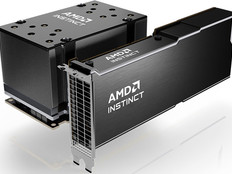1. Update Metrology for Material Purity, Properties and Provenance
New metrology — the science of measurement and its applications — is needed to meet increasingly stringent requirements for semiconductor material purity, physical properties and provenance (which records the journey of a material from production to end use) across a diverse supply chain.
Even microscopic defects or inadequacies can severely limit the performance of next-generation devices. Plus, different manufacturers may not have the same standards for accuracy in measurements or may have different assessment methods.
NIST calls for the development of measurement technologies, properties data and standards focused on defect and contaminant identification. The goal is to support uniform material quality and traceability across the supply chain.
2. Developing Advanced Metrology for Future Microelectronics
The challenge here is to make sure that critical metrology advances keep pace with cutting-edge and future microelectronics and semiconductor manufacturing. Complex 3D devices are being incorporated more often, and the metrology tools needed to measure them are often expensive and contain capability gaps.
NIST’s solution is to develop advanced physical and computational metrology tools that are adaptable to the next-generation manufacturing of advanced complex, integrated technologies and systems.
READ MORE: Advanced new technology can also be made more efficient.
3. Enabling Metrology for Integrating Advanced Packaging Components
Advanced packaging is key in microelectronics. This involves enabling different devices to be integrated and packaged together to meet application-specific requirements. The materials and processes used to create advanced packaging impact metrology and inspection.
Nonstandard materials may impact inspection requirements, and advanced packaging presents unique measurements for back-end processes and technologies.
NIST proposes R&D to develop metrology to enable the integration of sophisticated components and new materials to support the domestic advanced microelectronics packaging industry.
4. Reviewing Semiconductor Materials, Designs and Components
Modeling and simulation are used in the semiconductor industry to reduce development time. However, next-generation semiconductor materials and devices will require advanced metrology tools to be modeled and simulated effectively.
More complex future technologies will test the limits of current systems and may cause reductions in performance and accuracy.
The proposed solution is to create advanced design simulators using multiphysics models and next-generation concepts, such as artificial intelligence and digital twins.












